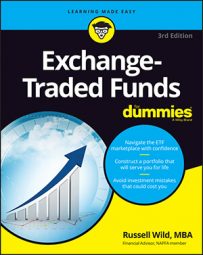When exchange-traded funds (ETFs) were first introduced, they were primarily of interest to institutional traders — insurance companies, hedge fund people, banks — who often have investment needs considerably more complicated than yours and mine.
Ability to trade lots of stocks at once
Prior to the introduction of ETFs, a trader had no way to buy or sell instantaneously, in one fell swoop, hundreds of stocks or bonds. Because they trade both during market hours and, in some cases, after market hours, ETFs made that possible.
Institutional investors also found other things to like about ETFs. For example, ETFs are often used to put cash to productive use quickly or to fill gaps in a portfolio by allowing immediate exposure to an industry sector or geographic region.
Versatility of ETFs
Unlike mutual funds, ETFs can also be purchased with limit, market, or stop-loss orders, taking away the uncertainty involved with placing a buy order for a mutual fund and not knowing what price you’re going to get until several hours after the market closes. See the sidebar “Your basic trading choices (for ETFs or stocks)” if you’re not certain what limit, market, and stop-loss orders are.
And because many ETFs can be sold short, they provide an important means of risk management. If, for example, the stock market takes a dive, shorting ETFs — selling them now at a locked-in price with an agreement to purchase them back (cheaper, you hope) later on — may help keep a portfolio afloat.
For that reason, ETFs have become a darling of hedge fund managers who offer the promise of investments that won’t tank should the stock market tank.

